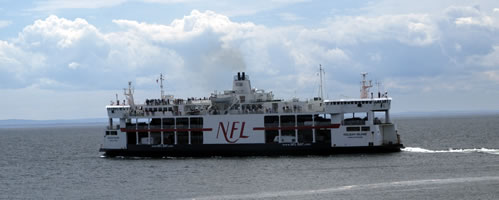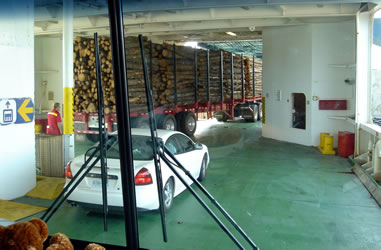Update: Seal Cove Summer
We chose an east-end campground that was off-the-beaten path for most US tourists. Those RVers that showed up were usually only there for a day or two. Most felt like they needed to keep moving. We thought that was silly since you could drive across the entire island in a few hours. The campground owner thought the government maps should be rescaled because the map made the island look much bigger than it was. The campground was very popular with local PEI campers and was usually filled on the weekends with people golfing, kayaking, and just enjoying the beach. Canadians love their beer and campfires. People dug clams on the beach and steamed them over open fires. We enjoyed walking on the red sand beach during low tide when you could see the many razor clams (photo below left), star fish (photo below right), snails, and other tidewater life such as mosquitoes and huge biting horse flies.
Early mornings it was a treat to see the seals sun and play off the swim dock in front of the campground. The seals disappeared during the day once people entered the water in kayaks and tour boats came by. They usually reappeared late in the afternoon on the island across the harbor.
|
Montague We were about 20 kilometers from the closest grocery store, so we took quite a few trips into Montague. This town had all the basics including two good grocery stores. We found the fresh produce including fruits, vegetables, and meats much better than many areas of the US. The meat was particularly fresh. Although a few of the products were different, almost everything we bought was the same as we would have purchased in the US. |
Arriving on PEI in early July, the first thing that struck us was the rural setting. It really reminded us of our midwestern US roots. We loved the smells of the farmland. We enjoyed the farmhouses, barns, rolling hills, and fields. The main difference was that most of the farmers had a fishing boat sitting next to their house and lobster traps for sale in the front yard. Instead of raising corn and soybeans, they raise potatoes (photo on right).
Many of these villages have beautiful churches. Larry took lots of photographs of churches. |
|
There were some interesting architecture, windows, and building materials.
We enjoyed the beautiful lupine (photo below) along the roads and in the meadows.
Although farming, fishing, and lumbering are major industries, the island relies on tourism for its main source of income. In recen years, a large potato chip company has come to the island and begun to transform it into the type of corporate farming that we see in Iowa and Illinois. We envision a time when many of the cute farmhouses begin to disappear to make room for larger potato fields. Many of the locals complain about the increasing use of pesticides and fertilizers. One tourist noted how few inland birds are left on the island as a result. There's also lots of lumbering on the island. The photo below was taken near our campground.
Another type of farming that was new to us was mussel farming. When looking out into Seal Cove from our front window, we could see hundreds of buoys suspending tube like net containers for growing mussels. One day when we were out walking, we stopped to talk to a couple commercial clam diggers. The province is very strict about the guidelines for selecting the size of clams. The ring on the bucket below is used to judge the size. If the clam can fit through the ring, it's too small and must be returned to the ground. Learn more about clam fishing measures. This woman and her younger sister were harvesting clams that were sold to buyers. On this particular day, her husband had dropped them off to this tidal area and he was working in another area.
|
Chiropractor Larry's back had been bothering him, so it was time to find a chiropractor. We saw an office in the nearby town of Montague, so Larry stopped in. The doctor was great and used a combination of approaches to help his back including acupuncture. Larry was impressed by the efficiency of his office. |
We enjoyed getting away from US television and radio. Although our satellite dish kept us in touch, we tried to keep the television off and enjoy the local natural areas and the Canadian culture. CBC radio contains a wide variety of interesting programming from a noontime genealogy show to a talk show where they ask for people to call in with stories about topics such as memorable picnics. We also loved their choices and mix of music including humor, folk, Celtic, and bluegrass. We found a local group that we really liked called Fiddler's Sons. They performed in the area and many of the songs had references to the local towns in the area. One of our favorite news stories this summer was related to the "Moosehead Beer Heist". A Moosehead Beer truck loaded with thousands of cans of beer was stolen. The truck was headed for Mexico, and the cans were easy to recognize because they were labeled in both English and Spanish rather than French. One person was stopped in Brunswick but there were only a few cases recovered. Everyone agreed that someone was going to have a great summer drinking beer, eh? One spokesman for Moosehead reluctanly admitted that publicity for the "suds heist" had been great advertising.
We also enjoyed the different perspectives on sports in Canada. For example, we followed the Canadian Olympic competitors. While we were there, the Stanley Cup came to PEI. A big festival in honor of pro hockey player and this year's MVP, Brad Richards, was held across the Murray River bay from our campground in his hometown, Murray Harbour. This quiet community of a few hundred residents was inundated with thousands of well-wishers and fans. The evening before the celebration and parade through town, Brad, his family, and a few close friends took the "cup" onto the their family's commercial fishing boat and traveled around the river stopping offshore at wharfs so everyone could see. Read more about the Brad Richards Day Parade.
|
We enjoyed taking walks along the red beach at low tide. We could walk among the starfish, razor clams, and crabs. We met a father with this three children who were searching for quahogs, a type of clam. We had a nice conversation. The next day, the children came to our RV and gave us a bunch of quahogs to try. We steamed them on the grill. We learned a lot of different types of shellfish while we were in PEI. We can now tell the difference between a mussel, oyster, quahog, scallops, razor clams, and other shellfish. To learn more about cooking shellfish, go to The Cook's Thesaurus.
|
 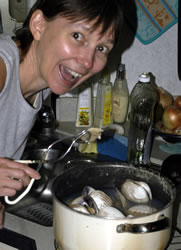 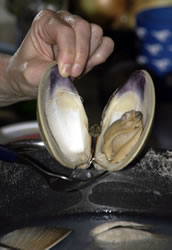 |
Ferry to Nova Scotia After a great six weeks in PEI, it was time to leave. It would have been nice to have a few more days here; we'll just have to come back again. We left in the morning and took the ferry from Wood Islands to Nova Scotia. We passed a ferry heading back to PEI (photo below). We met a really interesting man on the ferry. He was interested in how Annette sketched while Larry photographed our experiences. He pointed out how our recording experiences complemented each other.
|
It was fun to see the big lumber trucks on the ferry (photo below); they rode on the lower deck along with our RV and tow vehicle. When we left the ferry, we drove up the coast into Cape Breton, Nova Scotia.
Next Time The next time we get to the Prince Edward Island, here are some things we want to do:
|
Go to Lamb & Johnson Menu
|
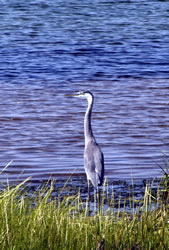 When we first made the decision to come to PEI (Usually pronounced as P-I), we expected cool summer days. This year was unusually wet and cool, but we like cool weather so it was perfect for us.
When we first made the decision to come to PEI (Usually pronounced as P-I), we expected cool summer days. This year was unusually wet and cool, but we like cool weather so it was perfect for us.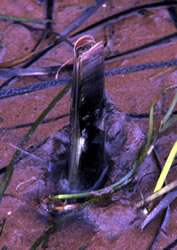


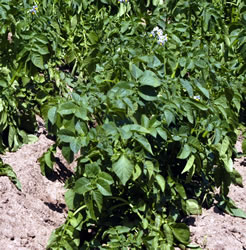 The Landscape
The Landscape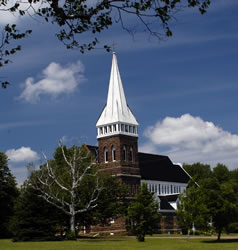 PEI is filled with cute, tiny towns and rural communites. Often the only evidence of a village is a church and cemetery.
PEI is filled with cute, tiny towns and rural communites. Often the only evidence of a village is a church and cemetery.
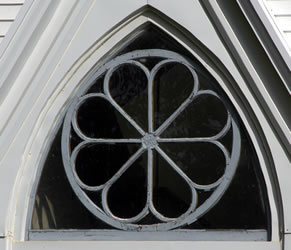
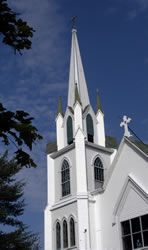
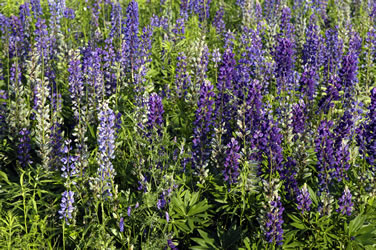
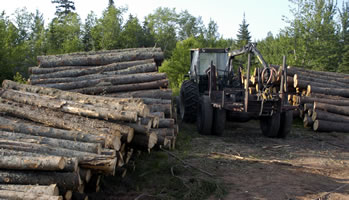
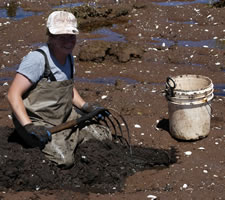
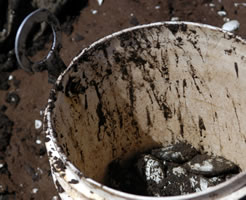
 Canadian Culture
Canadian Culture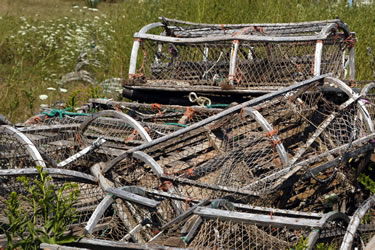
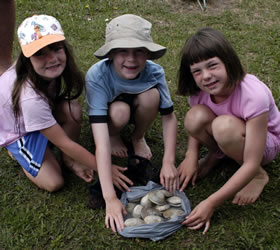 Quahogs
Quahogs